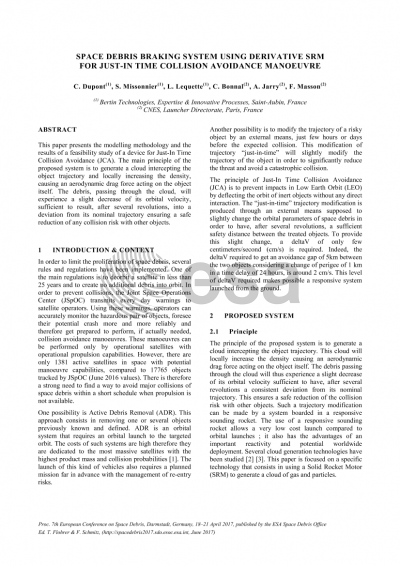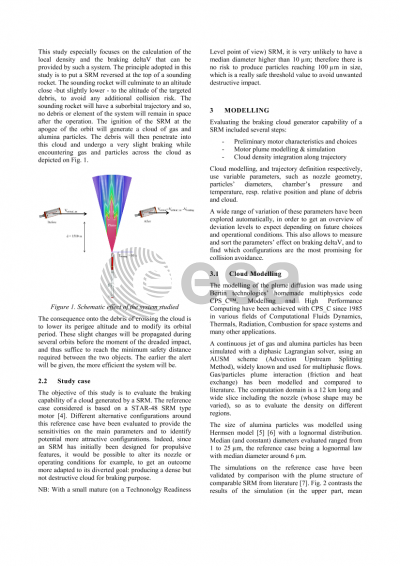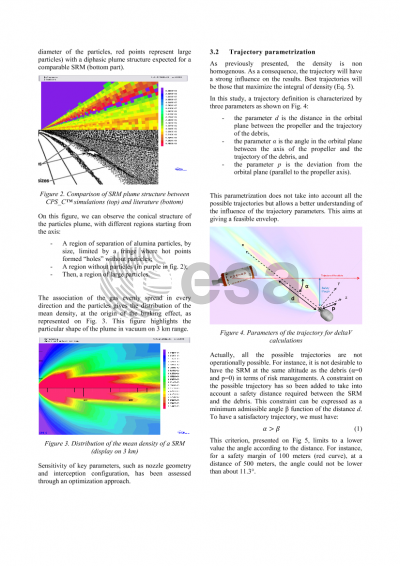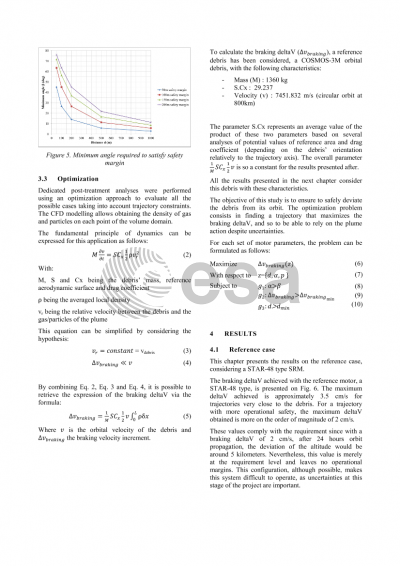Document details

Abstract
This paper presents the results of a feasibility study of a device for Just-In Time Collision Avoidance (JCA). The principle of JCA is to prevent impacts in LEO by deflecting the orbit of inert objects without a direct interaction with them. The “just-in-time” trajectory modification is produced through an external means supposed to slightly change the orbital parameters of a space debris, in order to have, after several revolutions, a sufficient safety distance between the treated objects. A small deltaV (few centimeters per second) is therefore required to slow down the debris. In order to have a responsive system, the required braking energy could be provided by a dedicated system on a suborbital trajectory. The main principle of this system is to generate a cloud intercepting the object trajectory and increasing locally the density causing an aerodynamic drag force acting on the object itself. The debris, passing through the cloud, will experience a slight decrease of its orbital velocity, sufficient enough to have after several revolutions a consistent deviation from its nominal trajectory ensuring a safe reduction of any collision risk with other objects.
This paper deals more particularly on the modelling of the plume diffusion and the calculation of the braking deltaV. A reference case has been studied by using, as an example, a classical solid rocket motor (SRM) plume. Gas/particle plume interaction with the object has been modelled using homemade multiphysics code CPS_C™. Sensitivity of key parameters, such as nozzle geometry and interception configuration, has been assessed through an optimization approach. The results of this study show the potentiality of this principle and highlight some interesting configurations beyond solid rocket motor that would provide the required debris deflection.
Preview







